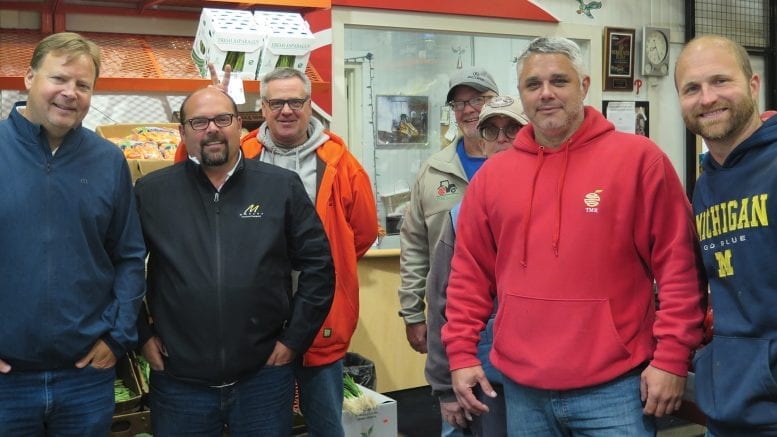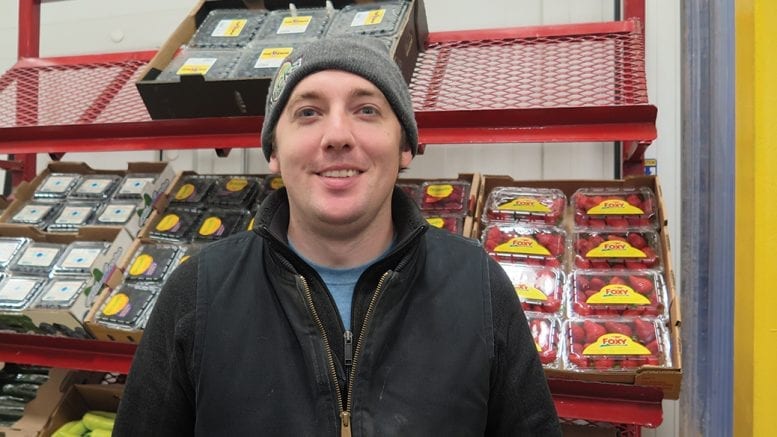Originally printed in the September 2019 issue of Produce Business.
Woven by geography, Philadelphia’s multi-faceted consumers continue to shape its food culture.
Since its rebirth in the late 1990s, Philadelphia has continued to evolve and change as a city and marketplace. Demographics point to the growth of younger residents, especially Millennials, as well as increasing ethnic and cultural influx.
“The general demographic trend of the city seems to be getting younger, more diverse and more vibrant,” says Dan Vena, sales with John Vena Inc. (JVI). “Trends are also moving out of the center of the city and hitting fringe areas.”

Currently, 5.9 million people live in the 10-county region with the population anticipated to reach 6.4 million by 2020, according to U.S. Census data. In 2000, 28% of the regional population was less than 20 years old, and 50% was between 20 and 54. Census data also forecasts 97% of the total population increase from 2000 to 2020 will be from non-white residents.
Philly’s diversity means catering to a host of demographics, explains Mike Maxwell, president of Procacci Brothers Sales Corporation. “Philly’s neighborhoods are broken into demographic clusters, and the retailers reflect this. Walking the Philadelphia Wholesale Produce Market (PWPM) showcases the diversity of items being brought in to address these different clusters.”

Philadelphia’s changing demographics bode well for the produce industry as trends push high-quality foodservice and greater neighborhood retail influence. “Many more specialty stores are popping up,” says Rick Milavsky, president at BRS. “This is a result of different neighborhoods growing and especially younger people moving in.”
The city’s continued growth in ethnicity also influences produce. “As ethnicity changes, our customer base seems to go hand-in-hand with it,” says Filindo Colace, vice president operations for Ryeco. “I’ve seen the change over the past 30 years, but even more so in the past five years.”
Rick Feighery, vice president of sales for Procacci Brothers, reports definite added demand for tropical and specialties catering to the Hispanic demographic. “That line is increasing in overall consumption and interest,” he says. “We’re also seeing customers asking for more specific items by label, especially in our Feliz line of products.”
Mark Levin, chief executive of M. Levin and Company, explains Philadelphia enjoys a sizeable population of Hispanic, Caribbean, Indian, Asian and Russian immigrants living and doing business in the region. “These customers come in looking for products they were using and eating in their home countries,” he says. “Because of this, we have seen our largest area of growth within our ethnic and tropical divisions.”
Crowded Retail Landscape
Such population influences have resulted in a diverse retail marketplace in Philly — from international giants such as Lidl and Aldi, to the proving-ground of Giant’s new “neighborhood market” concept, to continued success of hundreds of small corner stores.
“Philly’s diverse retail climate keeps us competitive and thriving,” says Todd Penza, salesman with Pinto Brothers. “The Philly retail market remains strong and diverse with a good variety of store formats.”
Tom Kovacevich, general manager at T.M. Kovacevich (TMK), says the retail customer base has expanded over the years. “We see more retail outlets in our region,” he says. “The triangle of NYC to Harrisburg, PA, to Virginia has seen steady growth of retail outlets. Logically, more stores mean more competition, and the best way for a store to distinguish itself is with fresh produce.”

Philly has more options than ever, reflecting its changing demographic, asserts Jessica Kean, marketing and sales for E.W. Kean. “We have chains such as Sprouts, Trader Joe’s, Whole Foods and Mom’s Organic, as well as delivery companies such as Fresh Direct and Peapod, plus an increasing number of smaller, specialty markets,” she says. “Many shoppers have shifted from a large weekly haul at one big chain to more frequent stops at a combination of local shops, farmers markets and chains plus delivery.”
Penza notes such diversity from large stores to farm market stands. “We have one customer from New York who owns five farmers markets,” he says. “They shop Hunts Point and Philadelphia.”
Though new stores find a competitive retail environment, according to Stephen Secamiglio, owner/sales at Colonial Produce, established stores remain strong with a reliable customer base. “There is an expansion of chains such as Whole Foods, Aldi and Lidl (in Ridley Park),” he says. “But strong smaller stores such as Gentile’s Market in Newtown Square, PA, still thrive.”

Leading retailers Acme Markets and Giant Foods control less than 17% of the market each, according to Chain Store Guide’s Market Share Report. Following these retailers are a handful of others posting between 3% and 8% shares, including Walmart, Wegmens, Costco, BJ’s, and ShopRite. A plethora of additional outlets holds less than a 2% share, including Sam’s Club, Whole Foods, Target, Aldi, Trader Joe’s, Dollar Tree, Redner’s, Save-A-Lot, small chains, dollar stores and specialty or ethnic retailers.
Small format and specialty stores continue to command their corner of the city, with some larger chains looking to get into this space. For example, the new Giant Heirloom market is a cut-down version of its typical store. “They’re looking to fit in a different retail space to serve the Center City niche,” says Maxwell. “They’ve created a store to fit in 28,000 square feet.”
But despite all the ruckus over chain business, John Hickey, managing partner at Coosemans, points to the importance of the stable, independent business. “Our customers are mostly independents, mom & pop’s, small restaurants and small jobbers,” he says. “Those are the bread and butter of the Market.”

Expanding Foodservice Fabric
Philadelphia’s demographics fuel a thriving and varied restaurant sector. “Philadelphia has a fantastic food scene,” says Kean. “The demand for distinct dining experiences is higher than ever. It’s exciting to know some of the best dishes and retail displays begin with the highest-quality, most-delicious fresh ingredients from our store.”
Chef Yong Kim, owner of Bluefin Restaurant in East Norriton, PA, points to the opportunity presented by six million customers in the greater metro area. “Our customers are more educated about food,” he says. “The dining culture in Philly is excellent, with many new restaurants. And, technology is pushing more high-end foodservice delivery as well.”

Procacci’s Maxwell points out the city as one of the nation’s trendsetters in foodservice. “The 2019 James Beard Awards just named Philly restaurant Zahav (modern Israeli cuisine) as the best restaurant in the country,” he says.
Philly’s restaurant scene encompasses a wide variety, from high end to street food, explains Vena. “Particularly, ethno-centric restaurants are growing,” he says. “We see dining from a variety of cultures popping up and full of younger customers. We’re also seeing a trend in less-complicated food but still great quality. Mission Taqueria above the Samson Street Oyster House is a good example.”
Procacci Brothers’ Feighery notes Philly’s diversity serves up everything from Indian to Korean to Vietnamese to Lebanese, Italian, seafood and steak. “These restaurants are shopping the market and looking for items they need and want,” he says. “The market vendors have done a good job at meeting the needs of our incredible restaurant scene.”
The market services distributors in the restaurant business including Sysco and US Foods, reports Maxwell. “There are four to five big wholesalers and restaurant providers shopping PWPM and we cater to all of them,” he says. “We provide many different and unique items that foodservice demands.”
Even PWPM companies that don’t service restaurants directly benefit from the business. Kovacevich reports a third of its business is with companies who service the restaurant industry. Colonial’s Secamiglio agrees foodservice distributors pull a lot off the market. “They recognize our value and flexibility,” he says.





